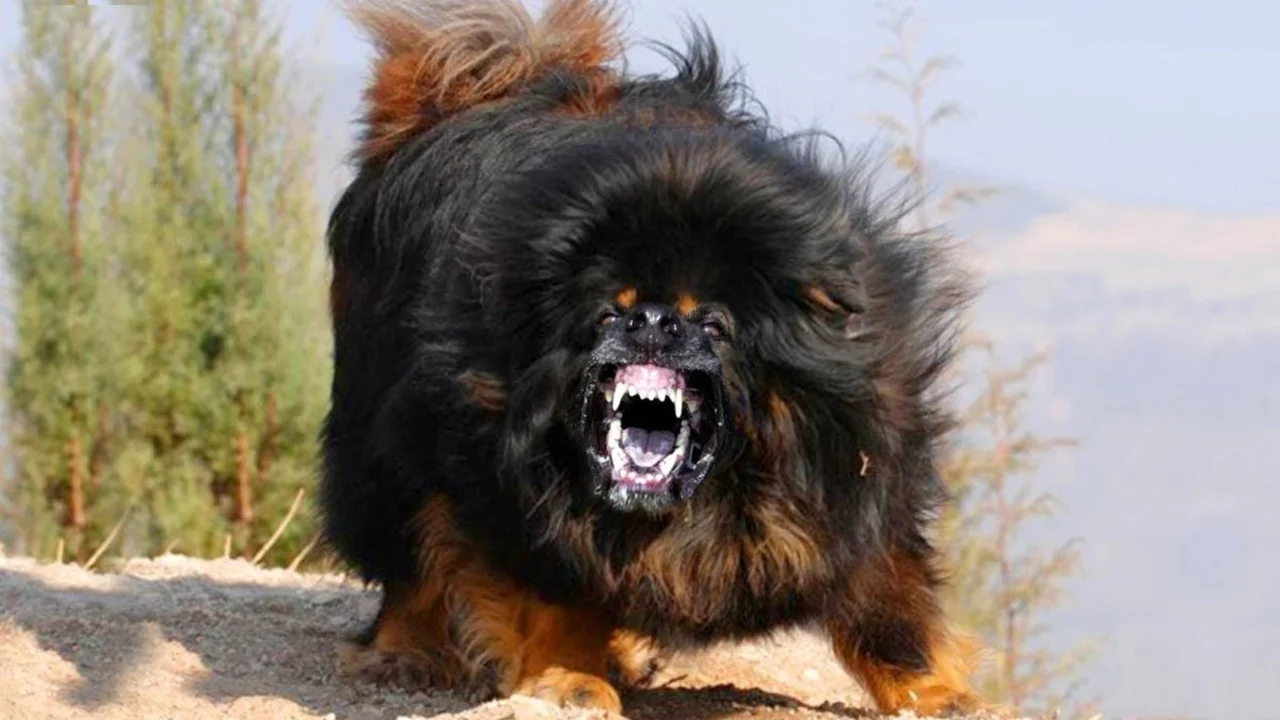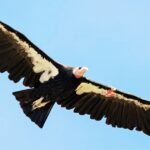Introduction:
Dogs are often considered man’s best friend, but certain breeds have a bad reputation for being aggressive and dangerous. As a result, many countries have banned or restricted the ownership of certain breeds to protect their citizens from potential harm. In this article, we will explore the top 10 most banned dog breeds in the world and the reasons behind these bans.
1. Pit Bulls
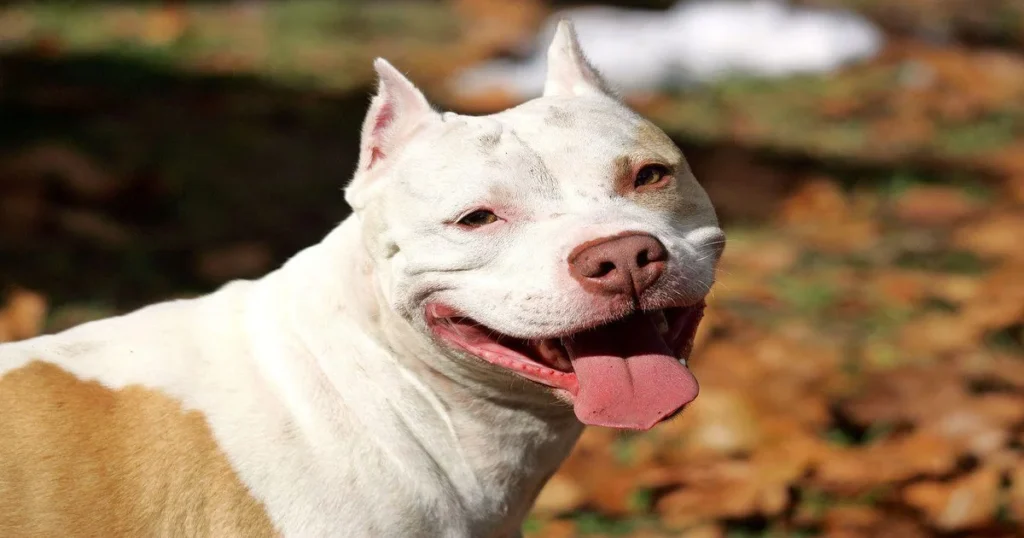
Pit Bulls are a breed of dog that has been subject to a lot of controversy and misconceptions. In this section, we will explore the history of pit bulls, common misconceptions and stereotypes about the breed, reasons for pit bull bans, and countries where pit bulls are banned.
History of Pit Bulls
Pit Bulls were originally bred for dogfighting, a brutal blood sport that was popular in the 19th century. The breed was developed by crossing bulldogs and terriers, resulting in a dog with a powerful build and tenacious spirit. However, despite their history in dogfighting, pit bulls were also bred to be loyal family pets, and they have a long history of being beloved family dogs.
Misconceptions and Stereotypes about Pit Bulls
Pit Bulls have been the subject of many misconceptions and stereotypes, largely due to their history in dogfighting. Many people believe that pit bulls are inherently aggressive and dangerous, but this is not true. In fact, pit bulls are known for their loyalty and affection towards their families. It is important to remember that any dog, regardless of breed, can become aggressive if not properly trained or socialized.
Reasons for Pit Bull Bans
Despite the fact that pit bulls are no more inherently dangerous than any other breed of dog, many countries and municipalities have implemented breed-specific legislation targeting pit bulls. The reasons for these bans are often rooted in fear and misconceptions about the breed.
2. Rottweiler:

The Rottweiler is a powerful breed that has been around for centuries. They were originally bred in Germany as a working dog, tasked with herding and guarding livestock. Today, Rottweilers are still used as guard dogs, but they also make great companions for families.
The History Of Rottweilers As Guard Dogs:
Rottweilers have a long history as guard dogs. In ancient times, they were used to protect herds of cattle and other livestock as they were transported to market. The Rottweiler’s natural instincts made them perfect for this job – they were fiercely protective of their charges and would not hesitate to defend them against predators or thieves.
As time went on, the Rottweiler’s role as a working dog expanded. They were used for a variety of tasks, including pulling carts, working in law enforcement, and even serving as search and rescue dogs.
Misconceptions About Rottweilers:
Despite their long history as loyal and hardworking dogs, Rottweilers have a bad reputation in some circles. They are often portrayed as aggressive and dangerous, but this couldn’t be further from the truth. In reality, Rottweilers are incredibly loyal and protective of their families. They are also highly intelligent and respond well to training and socialization.
However, it’s important to note that Rottweilers are a powerful breed, and they require a confident and experienced owner who can provide them with the proper guidance and training. Without this, they can become destructive or exhibit undesirable behaviors.
Rottweilers And Children: Are They Safe Together?
Many people believe that Rottweilers are not suitable for families with children. This misconception likely stems from the Rottweiler’s reputation as an aggressive breed. However, with the proper training and socialization, Rottweilers can be great with kids.
As with any breed, it’s important to supervise interactions between Rottweilers and children. However, when raised in a loving and nurturing environment, Rottweilers can be incredibly gentle and patient with kids.
Countries That Have Banned Rottweilers:
Despite their many positive attributes, Rottweilers are banned or restricted in some countries. For example, in Denmark, Rottweilers are classified as “dangerous dogs” and are required to be muzzled in public. In Malaysia, Rottweilers are banned outright, along with several other breeds, including Pit Bulls and Doberman Pinschers.
Conclusion:
Rottweilers are a powerful and loyal breed that has been used as a working dog for centuries. While they have a bad reputation in some circles, this is largely undeserved. With the proper training and socialization, Rottweilers can make great companions for families. However, it’s important to note that they require an experienced owner who can provide them with the guidance and structure they need to thrive.
3. German Shepherds
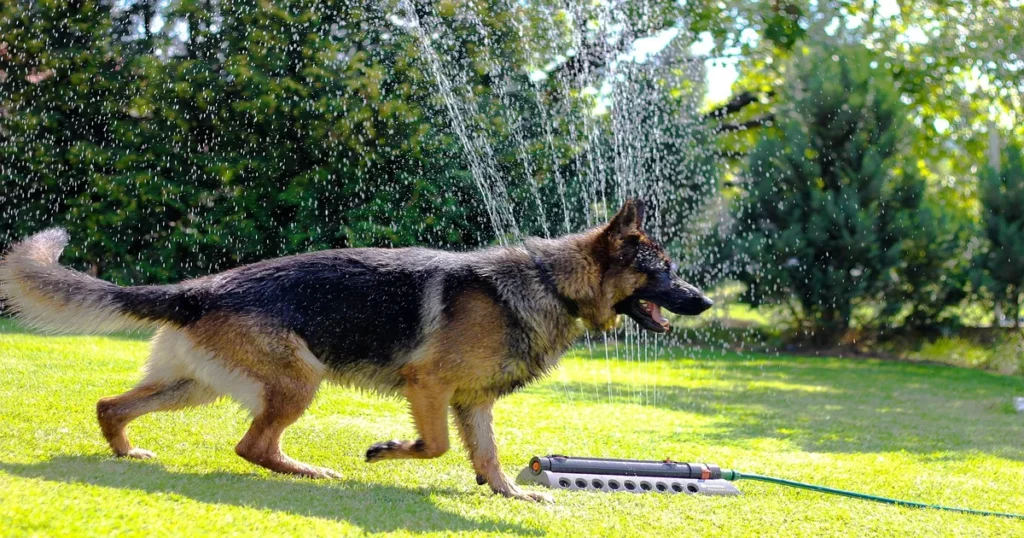
German Shepherds have a rich history as working dogs. They were originally bred in Germany in the late 19th century for herding and protecting sheep, but their intelligence, loyalty, and obedience soon led to them being used in other roles such as police and military work.
During World War I, German Shepherds served as messengers, guards, and rescue dogs on the front lines. They were so successful that they were soon adopted by other countries for military use. In fact, it was the American soldier who first referred to the breed as a “German Shepherd” during the war.
Despite their reputation as loyal and obedient dogs, German Shepherds have been the subject of much debate over their perceived aggression. Some people believe that German Shepherds are naturally aggressive, while others argue that it is a result of poor breeding, socialization, and training.
The truth is that German Shepherds, like all dogs, are individuals with unique personalities and temperaments. While some may be more aggressive than others, the majority of German Shepherds are friendly and loyal companions when properly trained and socialized.
Training and socialization are crucial for German Shepherds, especially since they are such intelligent and energetic dogs. They require plenty of exercise and mental stimulation to prevent boredom and destructive behavior. They also need to be socialized with other dogs and people from a young age to prevent aggression towards strangers.
Unfortunately, some countries have banned German Shepherds due to concerns over their perceived aggression. For example, Denmark, Norway, and the United Arab Emirates have banned the breed outright, while other countries such as Canada and the United Kingdom have placed restrictions on their ownership and breeding.
Overall, German Shepherds are a beloved breed with a rich history as working dogs. With proper training and socialization, they can make wonderful companions and loyal protectors.
4. Doberman Pinscher:

The Doberman Pinscher is a breed of dog that was originally developed in Germany in the late 19th century. They were bred to be a versatile working dog, capable of performing a variety of tasks, including guarding, herding, and even serving in the military. Today, Doberman Pinschers are popular as companion animals and are known for their loyalty and intelligence.
The Origin Of The Doberman Pinscher Breed:
The Doberman Pinscher was first developed by a German tax collector named Karl Friedrich Louis Dobermann. He wanted a dog that would be loyal and fearless, as he often had to travel through dangerous areas with large sums of money. To create the breed, Dobermann crossed several different breeds, including the Rottweiler, German Pinscher, and Greyhound.
Are Doberman Pinschers Aggressive By Nature?
One of the most common misconceptions about Doberman Pinschers is that they are naturally aggressive. However, this is not the case. Like any breed of dog, the temperament of a Doberman Pinscher depends largely on their upbringing and environment.
With proper training and socialization, Doberman Pinschers can be gentle and affectionate companions. However, they are also a powerful breed and require an experienced owner who can provide them with the structure and guidance they need to thrive.
Training And Socialization For Doberman Pinschers:
Training and socialization are essential for any breed of dog, and this is especially true for Doberman Pinschers. They are highly intelligent and respond well to positive reinforcement training methods. They also require plenty of exercise and mental stimulation to stay happy and healthy.
Socialization is also important for Doberman Pinschers, as it helps to prevent them from becoming fearful or aggressive. Introducing them to new people, animals, and environments at a young age can help to ensure that they are comfortable and confident in a variety of situations
5. Staffordshire Bull Terriers
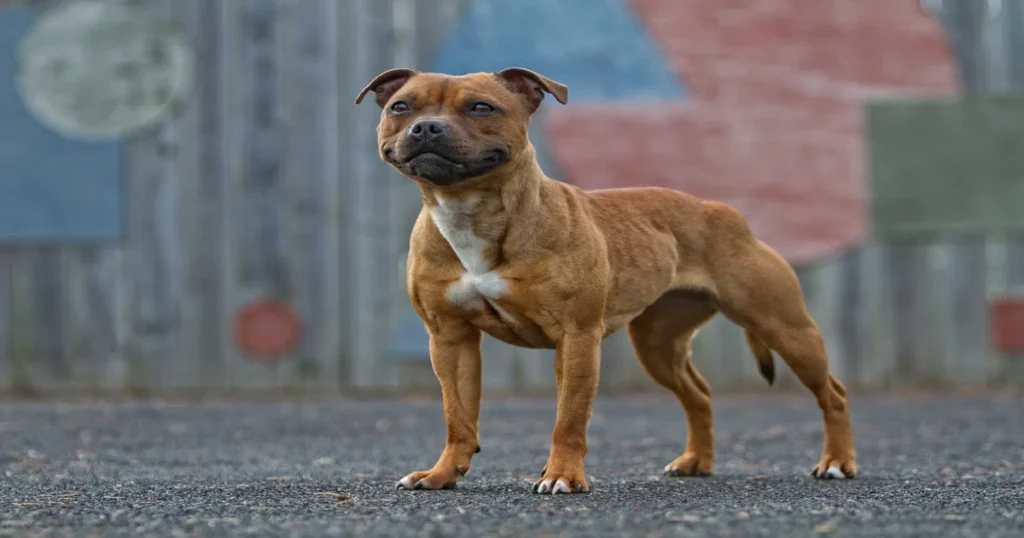
The Staffordshire Bull Terrier, also known as the Staffie, is a breed of dog that originated in Staffordshire, England in the 19th century. The breed was originally developed for bull-baiting, but after the practice was banned, the dogs were used for ratting and as family pets.
Despite their history as fighting dogs, Staffordshire Bull Terriers are actually known for their friendly and affectionate nature towards humans. They are often referred to as “nanny dogs” because of their reputation for being good with children.
However, like many breeds, Staffordshire Bull Terriers have been the subject of misconceptions and stereotypes. Some people believe that they are inherently aggressive and dangerous, but this is not true. With proper training and socialization, Staffordshire Bull Terriers can be well-behaved and loving pets.
Unfortunately, some countries have banned Staffordshire Bull Terriers due to concerns over their perceived aggression. In some cases, these bans have been put in place after high-profile incidents involving the breed, even though statistics show that Staffordshire Bull Terriers are not more likely to be involved in attacks than other breeds.
For example, in the United Kingdom, Staffordshire Bull Terriers are subject to breed-specific legislation, which requires them to be muzzled in public and puts restrictions on their ownership. In Australia, the breed is banned in some states, and in New Zealand, it is classified as a “menacing dog.”
Despite these bans, many people continue to advocate for Staffordshire Bull Terriers and believe that they are unfairly targeted. The breed has a loyal following and is known for being a loving and loyal companion.
6. Chow Chows
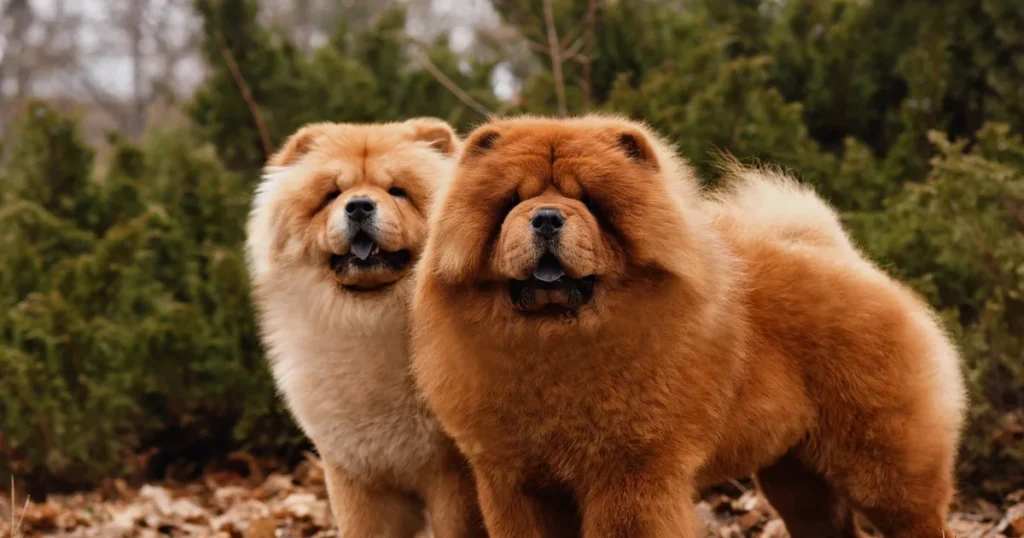
The Chow Chow is a breed of dog that originated in China thousands of years ago. They were originally bred for hunting, herding, and guarding, and were also used for food and fur. Chow Chows were first brought to the Western world in the late 18th century, and quickly became popular as a status symbol among wealthy Europeans.
Despite their long history as working dogs, Chow Chows have been the subject of bans in some countries due to concerns over their perceived aggression. Some people believe that Chow Chows are naturally aggressive and dangerous, but this is not true. Like all breeds, Chow Chows can be well-behaved and loving pets with proper training and socialization.
The reasons for Chow Chow bans vary depending on the country. In some cases, these bans have been put in place after high-profile incidents involving the breed, even though statistics show that Chow Chows are not more likely to be involved in attacks than other breeds. In other cases, the breed is banned due to concerns over their health issues, such as hip dysplasia and skin allergies.
Examples of countries where Chow Chows are banned include Norway, Denmark, and some parts of Germany. In Norway, the breed is banned outright, while in Denmark and Germany, ownership is restricted and the dogs are subject to breed-specific legislation.
Despite these bans, Chow Chows remain a popular breed in many parts of the world. They are known for their unique appearance and loyalty to their owners. With proper training and socialization, they can be loving and well-behaved pets.
7. Siberian Huskies
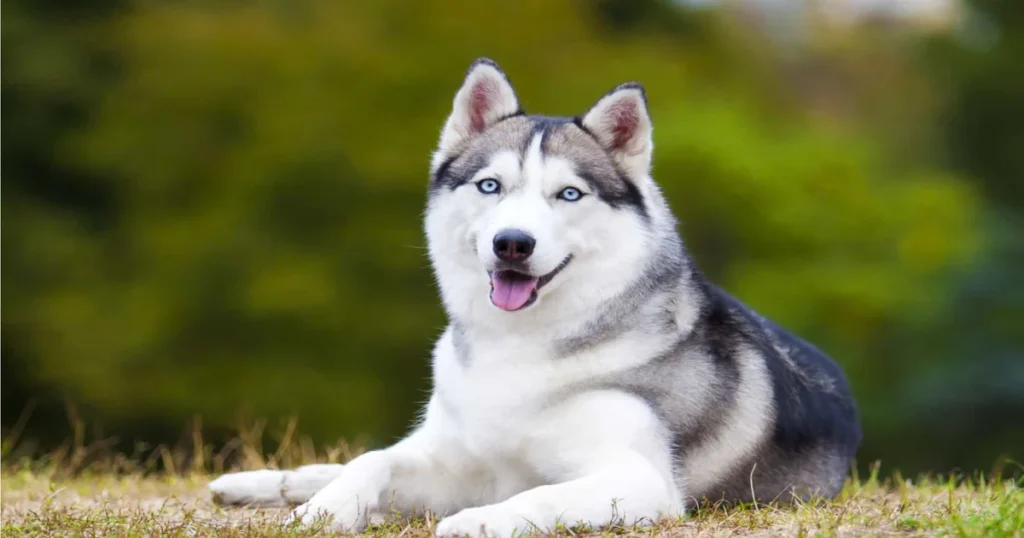
The Siberian Husky is a breed of dog that originated in Siberia, Russia. They were originally bred by the Chukchi people as sled dogs, and were used for transportation, hunting, and as companions. The breed was first brought to Alaska in the early 20th century, and quickly became popular as sled dogs in the United States and Canada.
Siberian Huskies are known for their thick, fluffy coat and their endurance in cold weather. They are also known for their friendly and playful nature, and are often used as family pets.
However, despite their popularity, Siberian Huskies have been the subject of bans in some countries. The reasons for these bans vary depending on the country, but often involve concerns over the breed’s perceived aggression or risk of attacks.
Examples of countries where Siberian Huskies are banned include Denmark, Singapore, and Malta. In Denmark, ownership of Siberian Huskies is restricted and the dogs are subject to breed-specific legislation. In Singapore, the breed is banned outright due to concerns over their perceived aggression, while in Malta, ownership is restricted due to concerns over rabies.
It is important to note that like all breeds, Siberian Huskies can be well-behaved and loving pets with proper training and socialization. It is unfair to generalize the behavior of an entire breed based on the actions of a few individual dogs. Siberian Huskies are known for their intelligence and loyalty to their owners, and can make great pets for the right family.
8. Akita Inus

The Akita Inu is a breed of dog that originated in Japan. They were originally bred for hunting, but later became popular as companion animals and guard dogs. The breed is known for their loyalty and intelligence, and is often used as a symbol of good luck and prosperity in Japanese culture.
During World War II, the Akita Inu breed almost became extinct due to a shortage of food and the government’s order to kill all dogs for their fur. However, a few breed enthusiasts were able to save the breed by breeding them with other Japanese breeds and carefully selecting for desirable traits.
Despite their popularity in Japan and around the world, Akita Inus have been the subject of bans in some countries. The reasons for these bans vary, but often involve concerns over the breed’s perceived aggression or risk of attacks.
Examples of countries where Akita Inus are banned include the United States, Canada, and the United Kingdom. In the United States, ownership of Akita Inus is restricted in some states and cities due to concerns over their perceived aggression. In Canada, the breed is banned in the province of Ontario. In the United Kingdom, the breed is subject to breed-specific legislation, which requires them to be muzzled in public and puts restrictions on their ownership.
It is important to note that like all breeds, Akita Inus can be well-behaved and loving pets with proper training and socialization. It is unfair to generalize the behavior of an entire breed based on the actions of a few individual dogs. Akita Inus are known for their loyalty and devotion to their owners, and can make great pets for the right family.
9. American Bulldogs
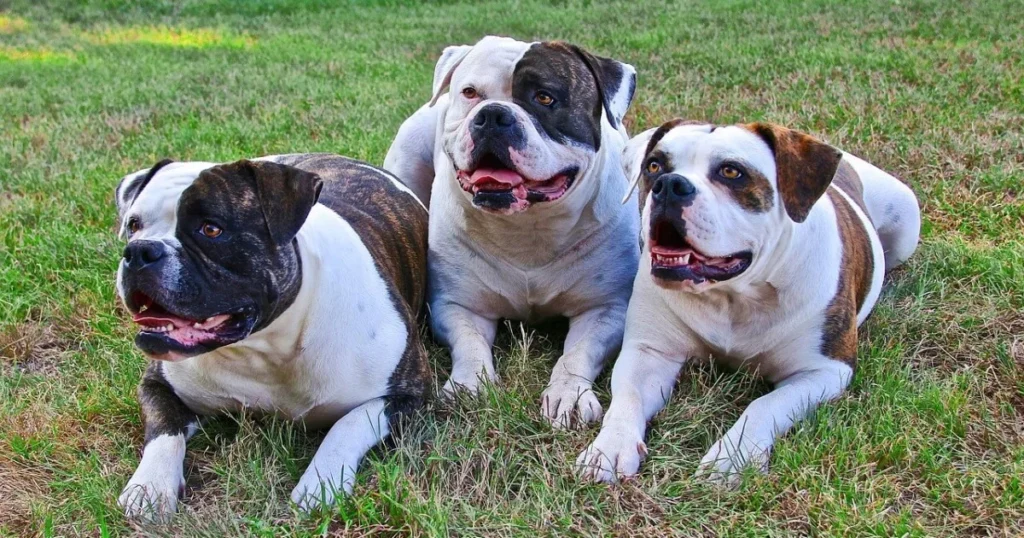
American Bulldogs have a history that traces back to the working dogs used in the southern United States. These dogs were used for hunting wild game, guarding property, and herding livestock. They were bred for their strength, agility, and loyalty.
During the 1800s, bulldogs were brought to America by immigrants and were used for a variety of purposes, including bull-baiting and bear-baiting. However, as these blood sports were outlawed, the bulldog breed became increasingly used for working purposes.
The American Bulldog breed evolved in the 20th century, with breeders selectively breeding dogs with the traits that were most useful for working purposes. The breed was also influenced by other breeds, such as the Old Southern White Bulldog and the English Bulldog.
Today, American Bulldogs are often kept as companion animals, and they can make loyal and protective pets. However, some countries have implemented bans on American Bulldogs due to concerns about their temperament and potential for aggression.
The reasons for these bans vary, but they often stem from incidents involving American Bulldogs biting or attacking people or other animals. Additionally, some countries have concerns about the breed’s physical strength and the potential for them to cause serious harm if they were to attack.
Examples of countries where American Bulldogs are banned include Germany, Denmark, Australia, and New Zealand. In the United States, some cities and counties have implemented breed-specific legislation that restricts or prohibits ownership of American Bulldogs or other so-called “dangerous breeds.” It’s important to note that breed-specific legislation is controversial, with many experts arguing that it is not an effective way to prevent dog bites and attacks.
10. Presa Canarios

The Presa Canario, also known as the Perro de Presa Canario, is a large dog breed that originated in the Canary Islands. Historically, the breed was used for herding livestock, guarding property, and in dog fighting.
The exact origins of the breed are uncertain, but it is believed to have descended from the ancient Molosser dogs, which were used by the Romans as war dogs. Over time, the breed was influenced by other breeds such as the Spanish Alano and the Bardino Majorero.
In the 20th century, the breed faced extinction, but efforts to revive it were successful, and it gained recognition from the Spanish Kennel Club in 1982. Today, the breed is recognized by the American Kennel Club and is kept as a companion animal in many parts of the world.
However, some countries have implemented bans on Presa Canarios due to concerns about their temperament and potential for aggression. The reasons for these bans often stem from incidents involving Presa Canarios biting or attacking people or other animals.
Additionally, some countries have concerns about the breed’s physical strength and the potential for them to cause serious harm if they were to attack. Some countries also believe that the breed is used in dog fighting, which is illegal in many parts of the world.
Examples of countries where Presa Canarios are banned include Australia, Denmark, Singapore, and the United Kingdom. In the United States, some cities and counties have implemented breed-specific legislation that restricts or prohibits ownership of Presa Canarios or other so-called “dangerous breeds.” It’s important to note that breed-specific legislation is controversial, with many experts arguing that it is not an effective way to prevent dog bites and attacks.
11. Japanese Tosa
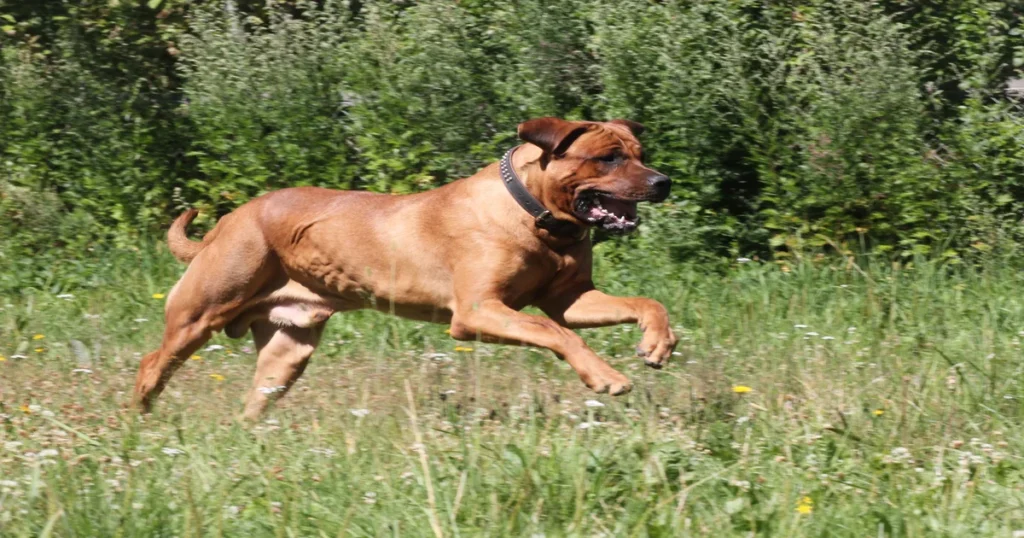
The Japanese Tosa, also known as the Tosa Inu, is a large dog breed that originated in Japan. Historically, the breed was developed for dog fighting, which was a popular sport in Japan in the 19th century. The breed was created by crossing various European breeds, including the Bulldog, Mastiff, and Great Dane, with native Japanese breeds.
The Japanese Tosa is known for its courageous and fearless temperament, which was prized for dog fighting. However, due to the violent nature of dog fighting, the breed gained a reputation for being aggressive and dangerous. Today, dog fighting is illegal in Japan, and the breed is primarily kept as a companion animal.
Despite their history of aggression, Japanese Tosas can be trained to be obedient and loyal pets. Training and socialization are crucial for these dogs, as they can be dominant and territorial. Early socialization with people and other animals can help to prevent aggression towards strangers or other dogs.
Training should be consistent and firm, but not harsh. Positive reinforcement techniques, such as rewards for good behavior, can be effective for training Japanese Tosas. However, it’s important to remember that these dogs have a strong prey drive and should always be supervised around small animals.
Japanese Tosas require regular exercise and mental stimulation, such as playtime and training sessions. They thrive in homes with experienced dog owners who can provide them with the attention and care they need. With proper training and socialization, Japanese Tosas can be loyal and loving companions.
12. Dogo Argentino

The Dogo Argentino, also known as the Argentine Mastiff, is a large dog breed that was developed in Argentina in the 1920s. The breed was developed by Dr. Antonio Nores Martinez, who aimed to create a versatile hunting dog that could work with other dogs and hunt a variety of prey, including wild boar and puma.
The Dogo Argentino is known for its strong, athletic build and its fearless temperament. It was bred to be a tenacious hunter, but also a loyal and protective companion. However, due to their history as hunting dogs, Dogo Argentinos can be prone to aggression towards other animals.
Proper socialization and training are crucial for Dogo Argentinos to become well-behaved family pets. Early socialization with people and other animals can help to prevent aggression and fear towards strangers or other dogs. Training should be consistent and firm, but not harsh. Positive reinforcement techniques, such as rewards for good behavior, can be effective for training Dogo Argentinos.
Dogo Argentinos require regular exercise and mental stimulation, such as playtime and training sessions. They thrive in homes with experienced dog owners who can provide them with the attention and care they need. It’s also important to note that some countries have implemented bans on Dogo Argentinos due to concerns about their potential for aggression.
Examples of countries where Dogo Argentinos are banned include Australia, New Zealand, the United Kingdom, and several European countries. It’s important to check local laws and regulations before owning a Dogo Argentino, as some countries may require special permits or restrictions for ownership.
13. Pit Bull Terrier

The Pit Bull Terrier, also known as the American Pit Bull Terrier, is a dog breed that has a controversial reputation due to its history of use in dog fighting. Pit Bulls were originally bred in England in the 19th century for bull-baiting, a cruel sport where dogs were pitted against bulls in an arena.
When bull-baiting was banned, the dogs were then used for dog fighting, which was popular in America in the 1800s and early 1900s. Due to their strength, loyalty, and tenacity, Pit Bulls became a popular breed for dog fighting.
Despite their history, not all Pit Bulls are aggressive or dangerous. Like any other breed, a Pit Bull’s temperament depends on its individual personality, as well as its socialization and training. However, Pit Bulls can be prone to aggression towards other animals, especially if they have not been socialized properly.
The aggressive reputation of Pit Bulls is due in part to their use in dog fighting, as well as media sensationalism and misinformation. Some people also choose to train their Pit Bulls for aggression, which can contribute to their reputation as a dangerous breed.
Due to concerns about Pit Bull attacks, several countries and cities have implemented bans on Pit Bulls or restrictions on ownership. Examples of countries that have banned Pit Bulls include the United Kingdom, Australia, and New Zealand. It’s important to check local laws and regulations before owning a Pit Bull, as some areas may require special permits or restrictions for ownership.
FAQs
Why are certain dog breeds banned?
Certain dog breeds are banned due to negative stereotypes and misconceptions about their behavior and temperament. These breeds are often unfairly labeled as aggressive or dangerous, despite there being no scientific evidence to support such claims.
Are all bans on dog breeds justified?
No, not all bans on dog breeds are justified. Breed-specific legislation can be discriminatory and unfair, and can result in responsible owners and well-behaved dogs being punished due to the actions of a few.
What can owners do to ensure their dogs aren’t subject to breed-specific legislation?
Owners can ensure that their dogs are well-behaved and properly socialized, and can also educate others about the myths and misconceptions surrounding certain breeds.
Is it fair to judge a dog based on its breed?
It is not fair to judge a dog based solely on its breed. While certain breeds may have certain traits or tendencies, each individual dog is unique and should be judged based on its own behavior and temperament. Stereotyping entire breeds can lead to discrimination and can prevent loving families from adopting a dog based on its breed alone, rather than its personality and compatibility with the family.
It is important to remember that responsible ownership and proper training can make a significant difference in a dog’s behavior and overall demeanor, regardless of its breed.
What are some alternative solutions to breed-specific bans?
There are several alternative solutions to breed-specific bans that can help to promote responsible dog ownership and prevent dangerous situations. Some possible solutions include:
- Focusing on owner education: Educating dog owners on responsible ownership practices such as proper training, socialization, and containment can help to prevent dog-related incidents.
- Enforcing existing laws: Existing laws such as leash laws, anti-tethering laws, and animal cruelty laws can be enforced more strictly to prevent dangerous situations involving any breed of dog.
- Encouraging breed-neutral legislation: Legislation that focuses on responsible ownership practices rather than breed-specific bans can be more effective in preventing dog-related incidents.
- Encouraging responsible breeding practices: Encouraging responsible breeding practices can help to reduce the prevalence of aggressive or dangerous dogs, regardless of breed.
- Encouraging adoption: Promoting adoption of shelter dogs, regardless of breed, can help to reduce the number of dogs that are euthanized each year and provide loving homes for dogs in need.
Overall, there are many alternative solutions to breed-specific bans that can be more effective in promoting responsible dog ownership and preventing dangerous situations.
